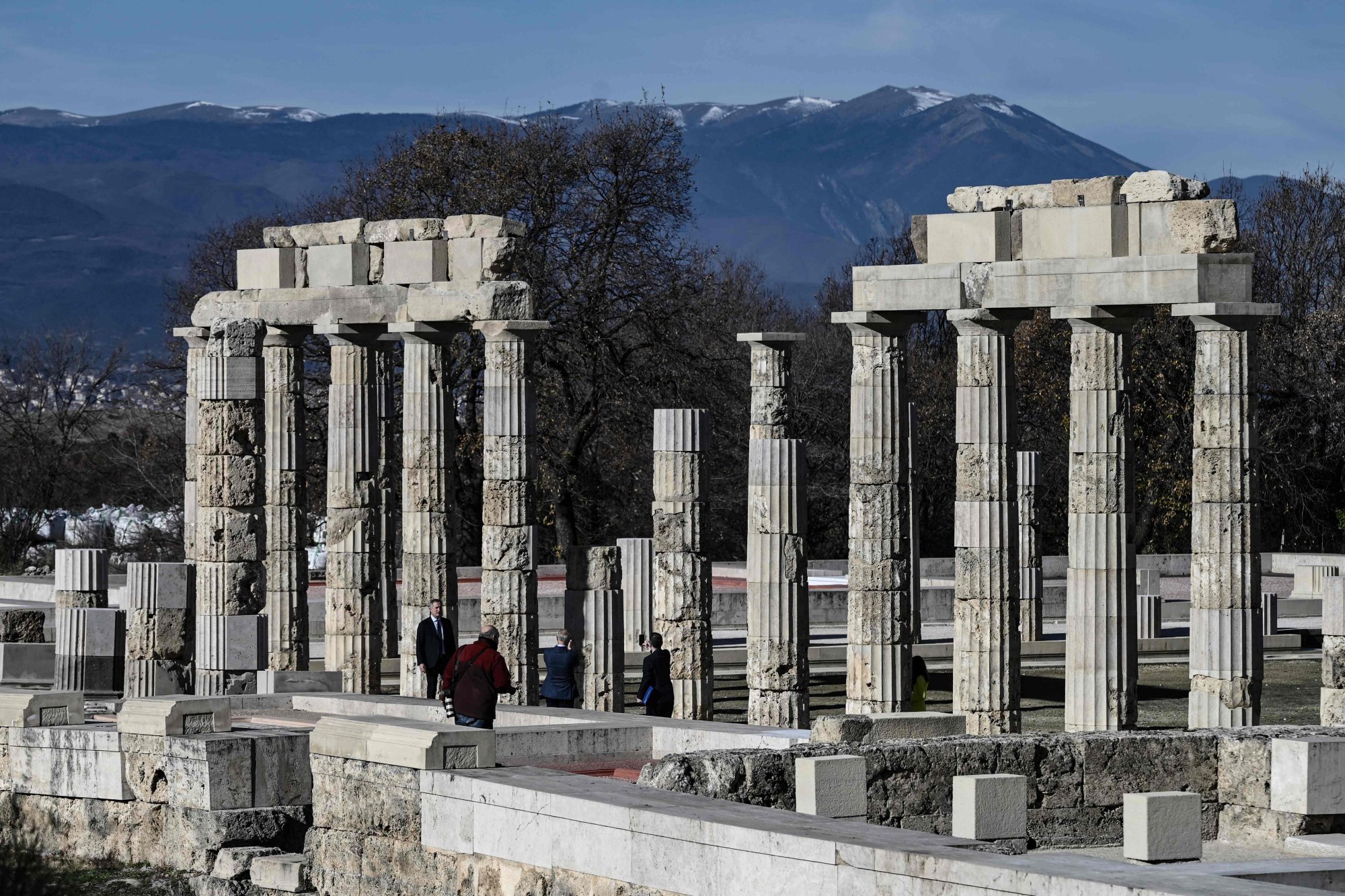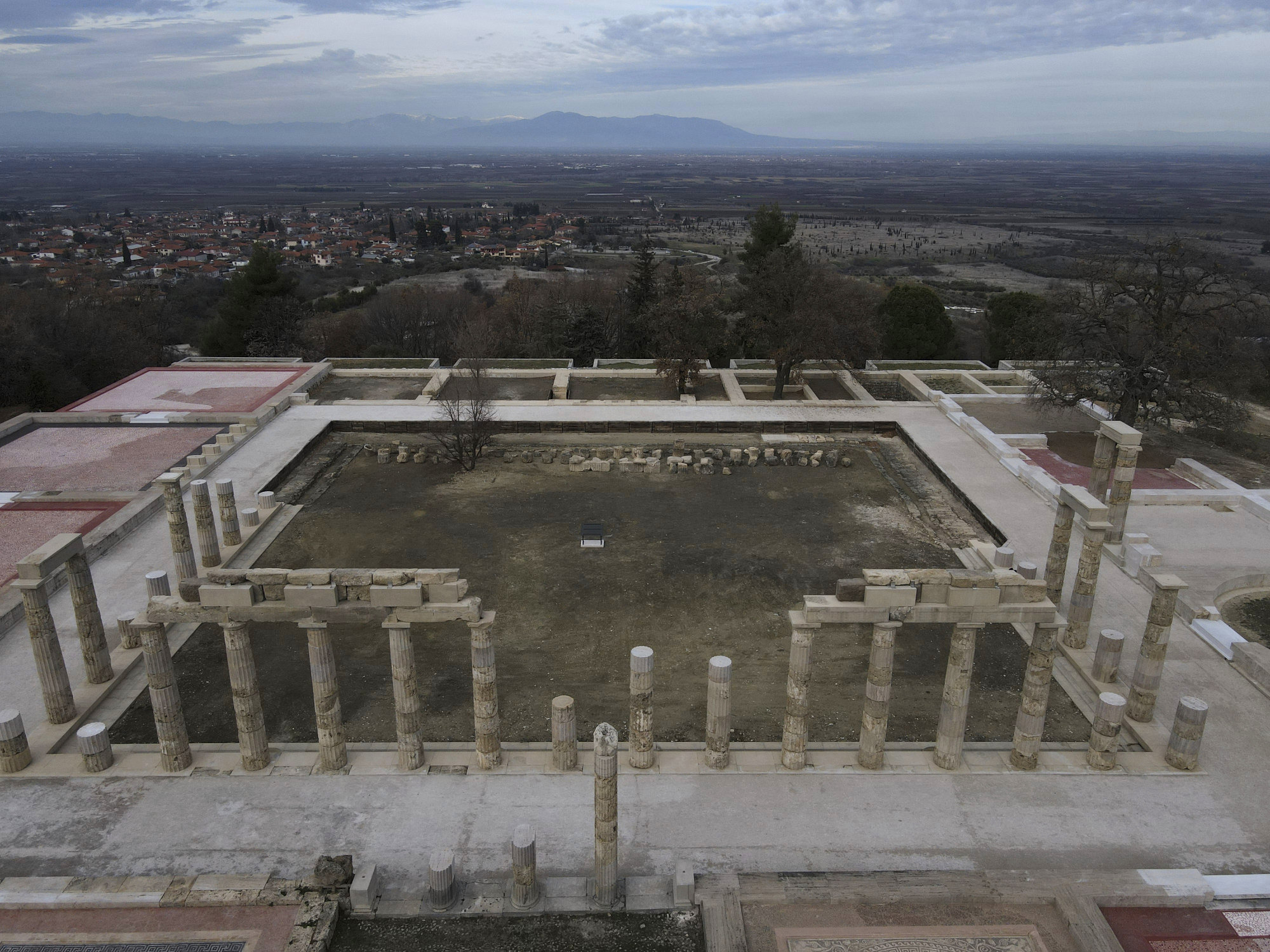
Largest building of ancient Greece, The Palace of Aigai – a United Nations World Heritage site – reopens to the public after US$22 million, 16-year renovation
- The palace, where Alexander the Great was proclaimed king and which was destroyed by Romans in 148BC, was built more than 2,300 years ago
- ‘What we are doing today is an event of global importance,’ Greek Prime Minister Kyriakos Mitsotakis said at an inauguration event at the site
It was the largest building of classical Greece: the palace where Alexander the Great was proclaimed king before he launched a conquest that took him as far as modern-day Afghanistan.
The Palace of Aigai, in northern Greece, was fully reopened to the public on Sunday following a 16-year renovation that cost more than €20 million (US$21.9 million) and included financial support from the European Union.
It was built more than 2,300 years ago, during the reign of Alexander’s father, Phillip II, who had transformed the kingdom of Macedonia into a dominant military power of ancient Greece. Aigai was its royal capital.
After the assassination of his father, Alexander was crowned at the palace in 336BC before launching a military campaign that created an empire stretching into modern-day India.

“After many years of painstaking work, we can reveal the palace … What we are doing today is an event of global importance,” Greek Prime Minister Kyriakos Mitsotakis said at an inauguration event at the site on Friday.
Close to the modern village of Vergina, the palace remains and nearby tombs of Philip and other Macedonian kings are a United Nations World Heritage site.
Shaped like two adjoining, unequally sized, square doughnuts, the Palace of Aigai was the administrative and spiritual centre of the kingdom.
No more vandalism, urine bottles: world’s largest Buddhist temple is reborn
It contained column-rimmed courtyards, courts, places of worship and spacious banquet halls, its floors decorated with patterned marble and intricate mosaics.
The building covered a ground area of 15,000 square meters (160,000 square feet) and the site also includes the agora, where ancient Macedonians debated important matters.
The Romans destroyed the palace in 148BC. Excavations to uncover the site started in 1865 and continued into the 20th century.

Some 65km (40 miles) southwest of the port city of Thessaloniki, Aigai drew international attention in the late 1970s during burial-mound excavations in the area of rolling green hills with patches of wild poppies and daffodils.
The late Greek archaeologist Manolis Andronikos led the digs and discovered the royal tombs, recovering a gold casket and other gold artefacts as well as bones widely believed to belong to Philip II.
The discoveries revealed the sophistication of the ancient Macedonians, who had often been sidelined in historical accounts by attention on Athens.

Angeliki Kottaridi was still an archaeology student at university when she joined the project as an assistant. She devoted her life’s work to the excavations and decades later became the driving force behind the new museum at Aigai, which opened a year ago, and the palace restoration.
She retired on December 31 as head of the region’s archaeological service and was honoured at Friday’s ceremony.
“What you discover is stones scattered in the dirt, and pieces of mosaics here and there,” Kottaridi told state television ahead of the inauguration. “Then you have to assemble things and that’s the real joy of the researcher.”

Like a three-dimensional jigsaw puzzle, the marble columns were resurrected by fitting pieces of stone unearthed in the ruins together with replica replacement parts.
“So when people ask me what makes me happy, I tell them it’s not the moment something is revealed,” Kottaridi said. “It’s the moment you realise you can take the knowledge one step further.”
Additional reporting by AFP

